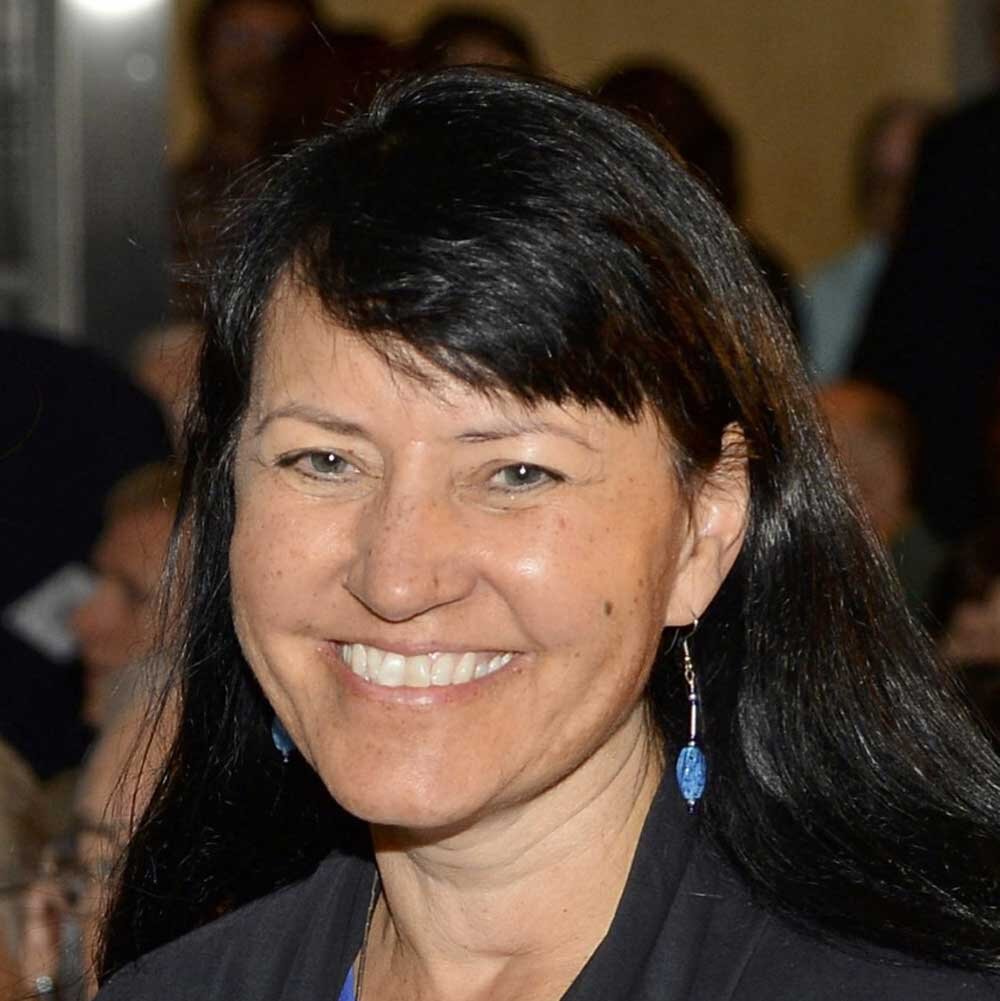Mimi Katz
Mimi Katz
Mimi Katz
Micropaleontologist
Mimi Katz is a micropaleontologist. She uses foraminifera that live on the seafloor to study ocean circulation, marine environments, sea level, and climate through time.
Mimi enjoys the sea breeze as the JOIDES Resolution leaves Lisbon, Portugal, at the start of an expedition.
Mimi went to St. Lawrence University in Canton, New York. She loved all the geology classes that she took in college, but had to specialize for her research career. Mimi thought about the daily work that she liked best, and realized that what she enjoyed most was processing microfossils while listening to the Grateful Dead.
Mimi went on to earn a master’s degree from the University of South Carolina and a Ph.D. from Rutgers University. She was a researcher at Columbia University and then Rutgers University for 25 years. She joined the faculty at Rensselaer Polytechnic Institute in Troy, New York, in 2007.
Mimi has gone on six marine research cruises with the International Ocean Discovery Program (IODP). On these cruises, she teamed up with specialists in other research areas. She considers her biggest challenges and biggest achievements to be her students.
Please share any positive experiences you’ve had with mentors or role models during your career.
“I grew up in an environment infused with nature and science, thanks to both my parents and my teachers. My fascination with geology grew thanks to Mr. Moyer’s 9th grade Earth science field trips, which were educational, insanely fun, and just a bit dangerous. Then came college and graduate school, with advisors who inspired and motivated me. Stimulating discussions with my peers were an invaluable facet of my student years. My current career phase has allowed me to add a rewarding facet to my professional life—mentorship of undergraduate and graduate students, along with community outreach. The people I meet in this capacity often challenge me to think a little harder and can inspire me further.”
Selected works by Mimi Katz
Katz, M.E., B.S. Cramer, J.R. Toggweiler, G. Esmay, C. Liu, K.G. Miller, Y. Rosenthal, B.S. Wade, and J.D. Wright. 2011. Impact of Antarctic Circumpolar Current development on late Paleogene ocean structure. Science 332:1076–1079. Link
Katz, M.E., B.S. Cramer, B. Honisch, K.G. Miller, Y. Rosenthal, and J.D. Wright. 2010. Traditional and emerging geochemical proxies in foraminifera. Journal of Foraminiferal Research 40:165–192. Link
Katz, M.E., K.G. Miller, J.D. Wright, B. Wade, J.V. Browning, B.S. Cramer, and Y. Rosenthal. 2008. Stepwise transition from the Eocene greenhouse to the Oligocene Icehouse. Nature Geoscience 1: 329–334. Link
Katz, M.E., J.D. Wright, K.G. Miller, B.S. Cramer, K. Fennel, and P.G. Falkowski. 2005. Biological overprint of the geological carbon cycle. Marine Geology 217: 323–338. Link
Katz, M.E., D.K. Pak, G.R. Dickens, and K.G. Miller. 1999. The source and fate of massive carbon input during the latest Paleocene Thermal Maximum. Science 286:1531–1533. Link
Further reading
Rensselaer Polytechnic Institute. 2009. Seafloor fossils provide clues on climate change. Phys.org, 22 October 2009. Link



